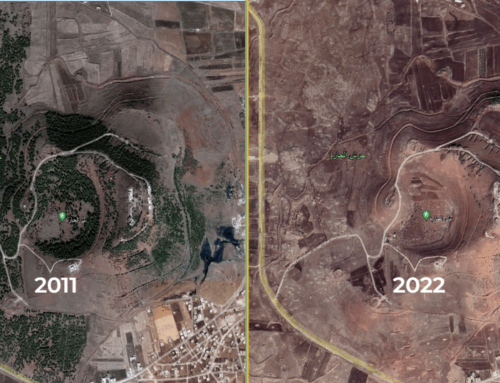Rebel spokesman: Iranian militias in Syria ‘saved the regime’
February 18, 2015 The Syrian military announced an operation earlier […]
18 February 2015
February 18, 2015
The Syrian military announced an operation earlier in the month to isolate Damascus from rebel-held areas in the Daraa, Outer Damascus and Quneitra countrysides following a series of opposition gains in the south over the past several months, including the capture of Sheikh Miskeen and Liwa 82.
Aside from pushing rebels away from the capital, regime forces aim to regain ground lost in the south and break up the rebel-controlled swathe stretching across the three aforementioned provinces.
As with so many other active battlegrounds across Syria from Aleppo to Hama to Daraa, Syria Direct is hearing this week in particular from countless citizen journalists and rebels on the ground that Iran is visibly intensifying its leadership role fighting for the Syrian regime.
“The Iranian Shiite militias’ participation is considered direct and barefaced intervention in the Syrian issue,” Nejm Abu al-Majd, a defected Lieutenant Colonel and current spokesman for the rebel al-Feilaq al-Awal force, tells Syria Direct’s Mohammed al-Haj Ali.
“It points to their illegitimate ambitions and intentions, old and new, to spread their control over the area,” says the Daraa-based spokesman, who estimates that rebels control about 70 percent of the province.
“The militias’ intervention certainly saved the regime after the latter had exhausted its material and manpower.”
Q: What is the Syrian army trying to do in Daraa?
The Syrian army and its allied mercenaries are trying to gain control of a number of strategic regions that it lost in previous battles. This loss represented the destruction of the regime’s lines of defense on Damascus, the capital.
Therefore it gathered troops in northern Quneitra, and a-Sanamein [the city of a-Sanamein is located between Damascus and Daraa city, roughly 50 km from each] in order to return the security situation to what it was before Deir al-Adas fell into FSA hands. Also it aims to push back progress rebels towards the Damascus countryside.

Q: Why did the regime begin this new battle in Daraa now?
Because Daraa represents a large reserve [of fighters and military equipment] for the FSA. Also because of the recent gains on the southern front, which reached the thresholds of Damascus.
There is also the number of military commanders in the province, who proved their worth in the last four years of the revolution.
Q: There are reports that the regime is trying to separate Quneitra from the western Daraa countryside. What’s behind this move?
This is indeed the goal of the military campaign, i.e., to control a triangle of land separating the three provinces [Daraa, Rif Dimashq and Quneitra].
Q: What is the regime’s strategy on the southern front?
The regime today has no decision-making capacity, sovereignty or strategy, because the Iranian Revolutionary Guard Corps and Hezbollah have taken over the decision-making process.
Their strategy revolves around attempting to exterminate the revolution from the south, and to extend their control to the Golan Heights, in order to become the true guardians of Israel’s safety.
Q: Will the regime’s control over Deir al-Adas change the balance of power in the region?
Yes, regime control over Deir al-Adas impacts the course of the FSA’s operations in the area.
It will slow things town, considering that Damascus is the FSA’s goal today, and the Deir al-Adas axis is the closest [in Daraa province to Damascus].
Q: How much of the southern region do the rebels control?
We control about 70 percent of the land, the regime’s control is limited to several centers in cities and towns.
Q: To what extent does Jabhat a-Nusra cooperate with the FSA in the region?
Jabhat a-Nusra is there on the ground, and acts independently of the FSA.
Q: What is the importance of the Shiite and Iranian militias’ participation in fighting in the South?
The Iranian Shiite militias’ participation is considered direct and barefaced intervention in the Syrian issue. It points to their illegitimate ambitions and intentions, old and new, to spread their control over the area.
The militias’ intervention certainly saved the regime after the latter had exhausted its material and human energy. As for the effect of these militias—it will only increase our resilience and the conviction in the justness of our cause.
Q: When did the Shiite Iranian presence appear in the southern regions?
The Iranian role was present from the beginning of the Syrian revolution. It it was limited to logistical support, but as events escalated their presence became clear in the most sensitive regions, in the southern regions and especially the mausoleum of a-Sayyeda Zeinab under the pretext of protecting their holy sites.
Q: There are reports that say Qassem Suleimani is located in the southern regions, do you have any information?
Yes, he is here on the ground, overseeing operations under orders from the leader of the Revolution [Ali Khamanei]. This proves the Iranians’ doctrinal involvement directly.
For more from Syria Direct, like us on Facebook or follow us on Twitter.







